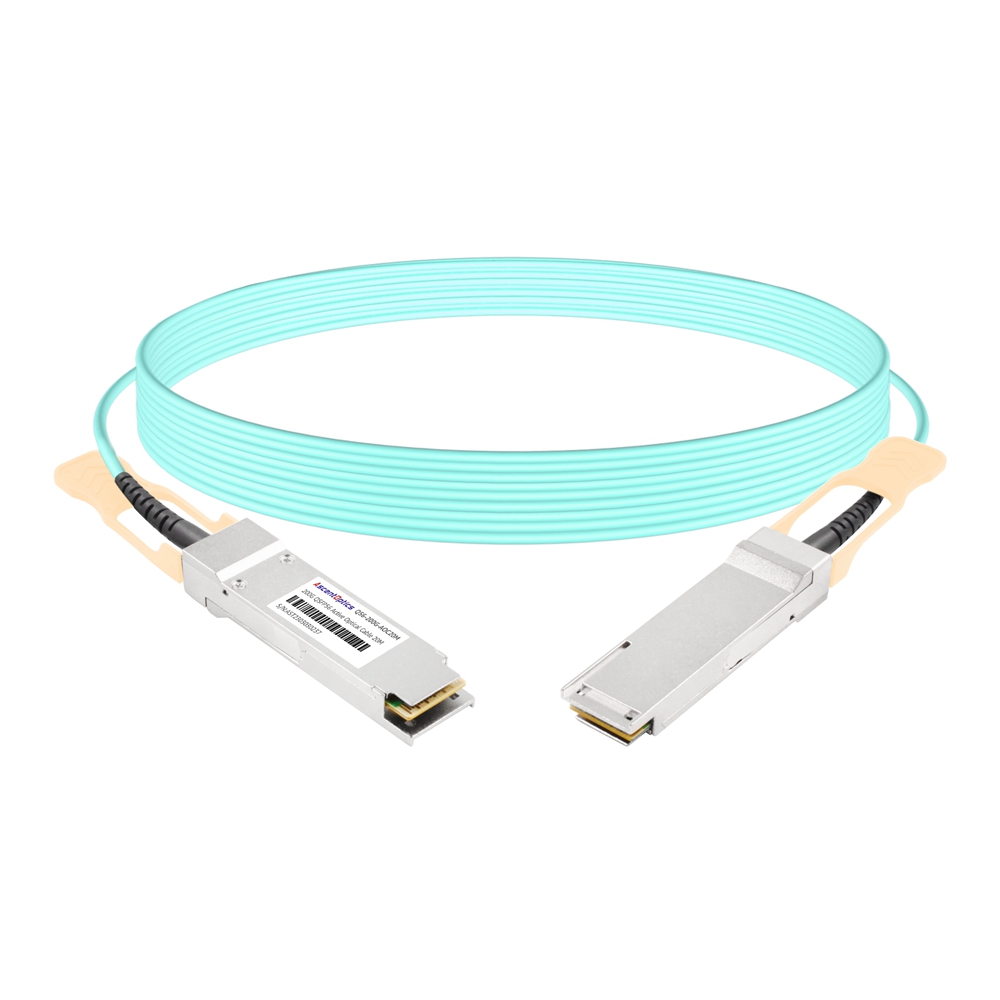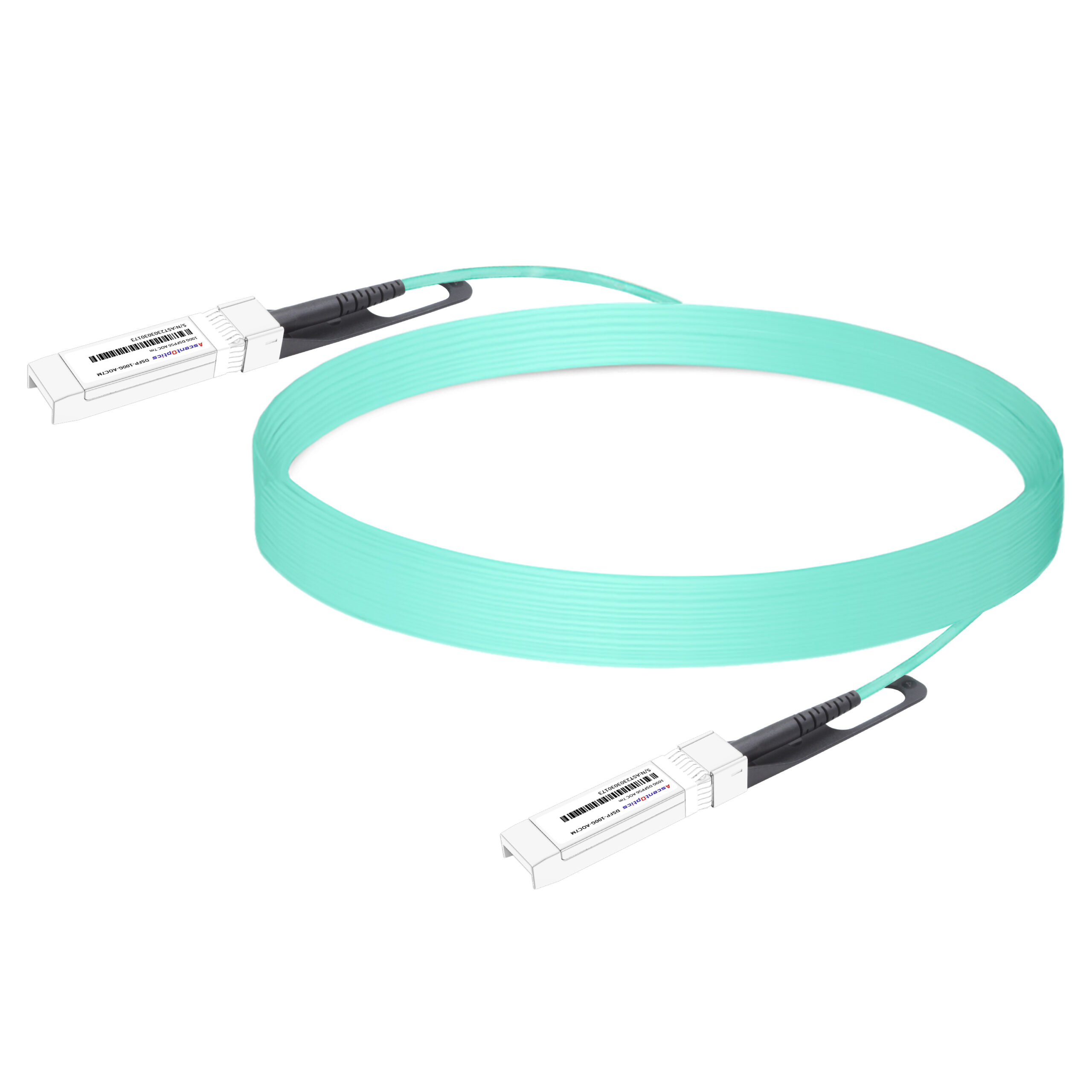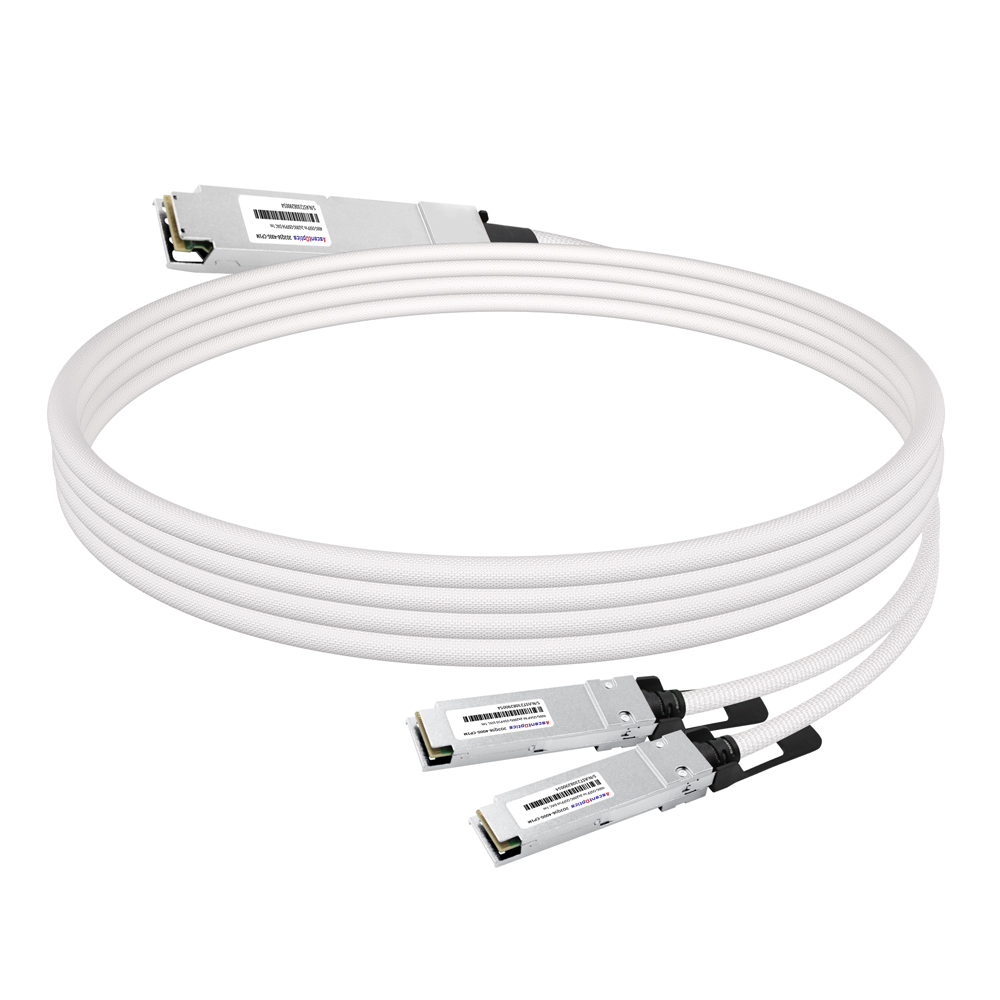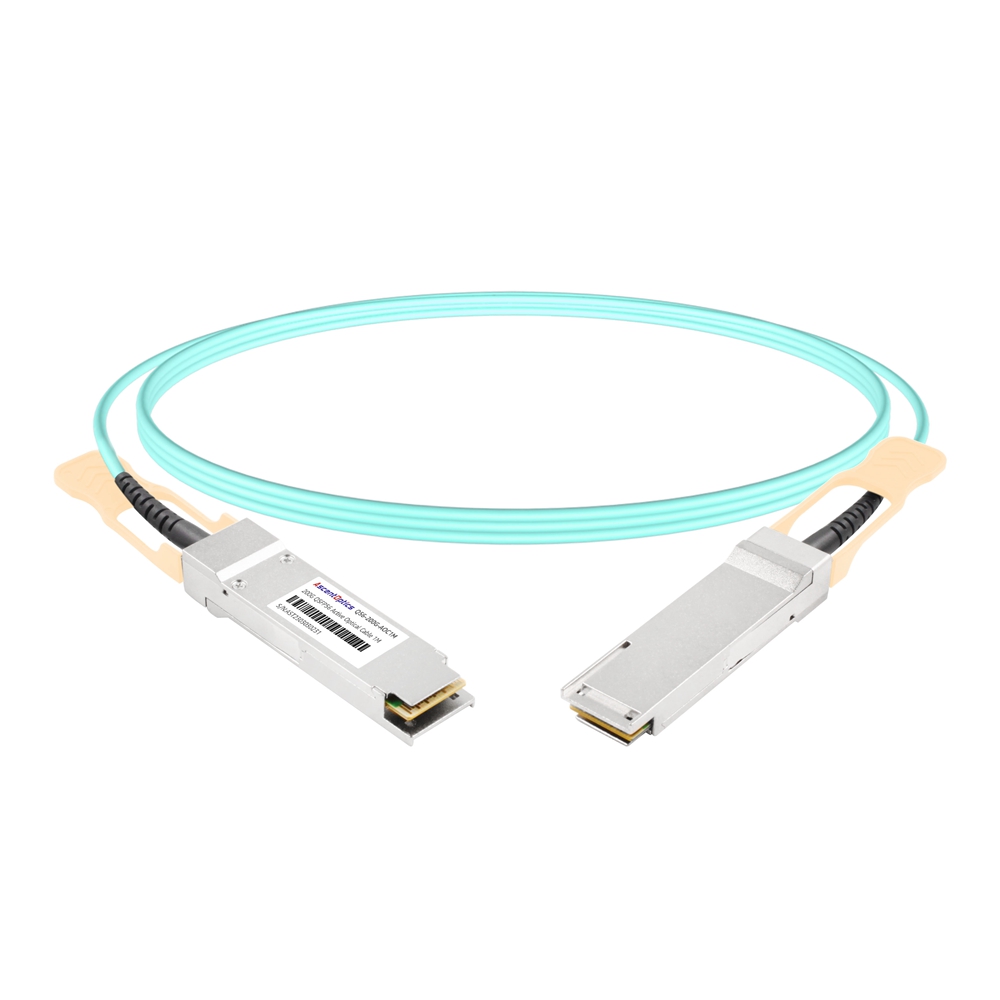Active Optical Cables (AOCs) are an innovative type of data transmission technology that has come forth to fill the gap between the old copper cables and the ever-advancing fiber optics. Unlike the traditional methods, AOCs are explicitly structured to provide long-distance connecting devices to help transfer high-speed data without any quality losses. It combines optical and electronic elements to allow AOC to function in data centers, enterprise networks, and high-performance computing environments. The article’s subject will convince the readers of the general understanding of AOC technical bases, benefits, and usage and how those components can help improve the interconnectedness of networks and their efficiencies in this age and time where data is vital.

Active Optical Cables (AOC) comprise many components that perform their functions cohesively to accomplish high data transfer rates. First, within an AOC, focusing elements, such as optical fibers, are used to transmit the data in light signals that travel faster. Active electronic components are also connected to these fibers, such as a transmitter that converts electrical signals into optical signals and the opposite – a receiver. Besides, AOCs have built-in integrated circuits with specifically defined functions, such as signal conditioning, control, etc. The advantages of AOCs overmatic cable transmission make it possible while maintaining good signal characteristics, low power consumption, small size, and application versatility.
When comparing Active Optical Cables (AOCs) with traditional copper cables, striking differences emerge, particularly concerning their applications in networking. First, AOCs integrate optical fibers, which support high bandwidth and faster data rates, as opposed to copper cables, which are limited by electrical energy and interference. Hence, AOCs are more applicable in areas where there is a need for more distance over data transmission without loss of data due to cocking at one point up to 1100 meters or even more.
This means that the thin and soft cables for AOCs make their installation and management less cumbersome; in particular, most data centers today have shooting space constraints and temperature management via airflow. The same functionality cannot be said about copper cables, which are usually heavier and stiffer, making the routing and airflow sufficiently hard. Finally, it is worth noting that copper cables are high maintenance in the sense that active elements are required over long distances. At the same time, AOCs combine these functions into a simple interface with low operational power and heat li1s, improving the power efficiency of the entire network infrastructure.
Active Optical Cables (AOCs) have certain principal properties that make them effective in modern networking setups.

Active Optical Cables (AOCs) provide several benefits aimed at the unique environment of data centers.
AOCs enable data centers to improve performance and enhance operational efficacy and readiness over emerging networking needs.
Some definite distinctions exist between Direct-Attach Cables and Active Optical Cables that can determine which one is more applicable in certain situations or roles in data centers.
To sum up, although both AOCs and DACs have certain benefits, the decision regarding them is generally made based on particular factors such as the geographical location, the complexity or duration of installation, and the energy efficiency in the data center.
Active Optical Cables (AOC) have several benefits for connecting data center systems, especially when installed with Cisco devices. First, AOC cables use optic technology models, which increase the bandwidth on the cable to 40G and 100G, which is imperative for current usage and requires large amounts of data. Second, introducing fiber optic cables in constructing AOCs makes them immune to EMC, assuring long-distance signal stability, which is essential in data center ambiance where systems are closely knit. Third, AOCs are complete with transceivers in most cases, hence supporting plug-and-play functionality, which helps connect and install a limited number of items required to provide connectivity. This assimilation is also advantageous from a cable operational performance perspective as the cable is deployed in terms of our government and integrated supervision towards improving connection efficiency in the changing setting. Hence, AOCs are very effective in addressing the issues of interconnections and rising traffic demands within the infrastructure of today’s networks.

AOC cables are decreasing the barriers between users and High-Performance Computing (HPC) technologies generally, but in particular, because they can transfer large volumes of data at distances with no quality loss. The usage of AOCs enables high band requirements, which are standard in HPC applications, such as the simulation of large amounts of data and data analyses. For example, they are thin and flexible, so rerouting and organizing the cables is less problematic – a core challenge in any complex HPC architecture where space is limited, especially when employing high-performance fiber optic cables.
In addition, AOC cables and modules are built to perform optimally in power-constrained environments, unlike traditional copper systems that consume too much energy. Optical technology shields signals from electrical noise, making data transfer more reliable and enhancing system performance, which is vital for HPC operations. With all the abovementioned features, it is only natural that AOC cables provide main-board HPC infrastructure and help enhance productivity and efficiency in various computing nodes.
Active Optics Cables (AOC) are a necessary element of fiber optic systems because they ensure practical space usage and high data transfer rates over considerable distances. AOCs employ many cavities that can transmit through optical fibers, whereas traditional cables use metal wires. This allows newer networks to have more bandwidth. They are usually provided with transceivers at either end, which enhance performance since these devices convert electric signals to light signals and vice versa, making latency low and increasing throughput.
Also, AOCs work exceptionally well in data centers with tightly packed equipment where weight and space are a luxury. Active elements can restore the signal’s integrity, allowing alternative components to be deployed over a relatively more flexible topology. For example, AOC does not require wiring, making them less susceptible to wear and tear but more helpful for precise applications such as telecommunication, media and information technology and processing. Generally, AOC helps increase the reliability of fiber optic networks, resulting in better data transmission.
AOC is increasingly appreciated while working with HDMI and multimedia products, particularly where the high quality of video and audio matters. Compared with conventional copper HDMI cables, active optical cables (AOCs) offer considerable distance and performance advantages. They can carry HDMI signals over a long range—usually well over one hundred meters at times—without loss of signal quality. They are excellent for use in prominent places and complex installations like commercial broadcasting, digital signage, and home theater systems.
Implementing any AOC in HDMI solutions also helps with the effect of electromagnetic interference, which is typical for such types of signals. Also, there is little weight and flexibility in the AOC, which makes it easy to install in small and hard-to-reach positions and areas, which increases the amount of mess related to wiring. These features are handy in practice in facilities where there is a need for unhindered transmission of multimedia information and high-definition images, thus reinstating AOC as an essential element in any audio-visual system.

In Active Optical Cables (AOC), Transceivers are the parts that receive electric signals and convert them into optical signals and back to electric signals, which is essential. A) AOC external transceivers are generally detachable from the assembly instead of incorporating the transceiver components into the AOC cables for better space economy and design. B) The transceivers send computer data via lasers or light-emitting diodes (LEDs), which photodetectors collect at the end.
Transceivers are one of the core components that determine the performance of AOCs, and besides the length and some other physical features, include data rate, wavelength, and power consumption. Hence, most of the modern AOCs can be operated at high data rates of up to 10 Gbps and above and, as such, can be used in applications with high demands for data bandwidth, such as watching high-definition videos and usage in connecting data centers. Also, applying Wavelength Division Multiplexing (WDM) systems allows efficient data transmission since it will be possible to send numerous signals in one fiber using in-built WDM multiplexers within the transceivers.
As such, the continued encroachment of more efficient and better-performing transceivers into AOCs extends their performance envelope and guarantees their use in transmitting high-speed data in all applications.
The integration of cable assemblies within Active Optical Cables (AOCs) is well thought out so that light can be ended over long distances with minimal losses, less complicated installation time, and stability. Most of these assemblies consist of good-quality optical fibers along with other protective features for the fibers against chemical or physical stress. In this case, the connectors are essential because they enhance the use of AOCs with so many devices or systems. The most common ones include LC, SC, and MPO, with each type having some merits concerning size, efficiency, and robustness.
The performance of these types of connectors is always essential for the overall effectiveness of the AOC. Key performance parameters for evaluation include insertion loss, return loss, and number of connect/disconnect cycles the device can withstand. In addition, proper positioning of the fiber cores upon connection significantly reduces signal losses and ensures efficient data transfer. Choosing the right cable assemblies and connectors is an essential step toward effectively deploying AOC solutions in harsh environments.
Active Optical Cables (AOCs) are designed to support several data rates ranging from 10 Gbps, 40 Gbps, and 100 Gbps to even higher bandwidths like 200 Gbps and 400 Gbps due to technological improvement. Examining the performance features of AOCs is very important in determining the range of applications in which they can be used. Some of the critical parameters are bandwidth distance product, signal integrity, and latency. The bandwidth distance product simply states the highest possible rate of this cable given a specific cable length, which is essential for applications that transmit data over long distances. The signal’s integrity is affected by factors like attenuation, which is simply the reduction of the strength of the signal as it travels through a certain distance, and crosstalk, which is the electrical interference by the surrounding channels. Latency, in simple terms, means the time taken to produce output after input, which can be very important in fast computers and data centers. In summary, all these parameters help select AOCs that will yield good performance within the networking architectures and work optimally with the cable performance with no reduction in compatibility.

While working with Active Optical Cables (AOCs), problems that may impact the regular operation can occur. Here are a few tips that can help solve these problems:
By following these tips and paying attention to the operational environment of AOCs, users can fully operate and protect their AOC-based fiber optic systems.
Active Optical Cables (AOC) can be challenging to work with when adding new components to existing systems, and various integration aspects need attention for system consideration. Initially, check the AOC specifications, including data rate and connector type, against those of the current network equipment installed and ensure compatibility. One of the AOC cables should provide the same functional responsibilities, possessing the same protocols such as HDMI, DisplayPort, and Ethernet standards already in use.
In addition, the critical specification concerns the distance and bandwidth range of the AOC. Other factors, such as distance, may be in each cable being used; therefore, it is good practice to consider the adequate distance covering cables without compromising the signal quality. If this is not done, damage to components like those on network switches or routers, even when their function is not to transmit any AOC sink on their own unless they reach a saturation point in the ability to care for the rate of data “in and out.”
As a last resort, testing the AOC within acceptance testing procedures is critical so that potential integration problems can be altered beforehand. These factors are the basis on which the integration of new system components is carried out successfully.
To ensure proper usage and preservation of the Active Optical Cables (AOCs), it is advisable to implement practices properly organized by work manufacturers. First of all, correct installation and operation is the first measure; you should not excessively bend or twist the cables as they can get damaged internally. Let’s avoid excessive use of AOCs and put them in the appropriate environment when AOCs are not needed, i.e., no excessive temperatures and mechanical forces present. Behavioral safety measures are concerned with storage so that damage due to wear and tear is effectively avoided.
For example, keeping connectors and general cleaning of the ends of the cables free of dust and dirty environments is also essential since anything that gets in the way will affect performance and connectivity. Also, make sure that the AOCs are operated under the stipulated conditions in terms of maximum distances covered and the bandwidth used so that overheating of the cables and deterioration of the quality are avoided. All these precautions will considerably help make AOCs more durable and dependable across a variety of applications.

Advances in AOC technologies pay attention to the performance, extensibility, and compatibility of new data transmission systems with obsolete ones. Mass vendors are constantly creating new AOCs supporting high-density bandwidth capabilities, increasing data rates critical for use in data centers and high-end computing. AOC has also developed enhancements, including using new materials for high performance and greater cable flexibility for fast installation, which cuts on the infrastructural hitches.
Their further development makes AOC even more appealing, mainly because it combines AOC with modern-day technologies such as Thunderbolt 4 or PCIe 4.0, which allows fast data exchange and more excellent device compatibility, lending a hand in optical telecommunication. Moreover, with the advent of multimode AOC with DWDM technology, the AOC data transmission distances are expected to be expanded without degradation to the signal quality, enhancing efficiency. All these improvements put AOCs in the leading position in the evolving world of high-speed data networks, which must cope with the increasing demand for bandwidth in most spheres.
There is no doubt that very soon, the parameters governing data transmission will change radically due to high data requests and improved technologies. Three main trends can be observed developing now:
Such trends reflect the direction that these systems and communication in general are taking—systems that are more efficient, fast, and intelligent. Hence, there is a need to build a strong supporting infrastructure for such data transmission requirements in the coming generation.
Active Optical Cables (AOCs) have emerged as a crucial player in various applications owing to the efficiency of data transmission and the robust bandwidth they accommodate. Here are some leading use cases seen in the market today:
These use cases highlight the AOCs’ wide applicability and reinforce their capability to meet the changing requirements of data transmission in various industries.
A: An AOC cable is coaxial in design and incorporates active components interposing between the ends of passive optical cables to extend distance and bandwidth performance. In comparison, cost-efficient DAC cables are more commonly made of copper and are for short-range applications.
A: AOC cables offer benefits such as improved bandwidth, greater distance, lighter weight, and reduced signal noise. They are the appropriate choice for high-performance computing and data centers that require high-speed and high-volume data transfer without losing interoperability.
A: By incorporating optical fiber technology, HDMI Active Optical Cable enables HD signals to span longer lengths without compromising speed and reliability. It can connect computers or media players to monitors, projectors, and TVs over long distances without degradation of picture quality.
A: AOC cables have better speed and distance capability. Because of this, there are minimal transmission losses over longer distances, and they have more bandwidth than traditional copper cables. Therefore, they are ideal for high-bandwidth-consuming devices such as InfiniBand, Ethernet, and Fibre Channel.
A: A breakout AOC is defined as one cable configuring to split into two or more connectors on one or two ends. They are designed to interconnect several devices into one port or a single device, typically found in the data center or high-end computational clusters where space and connectivity must be efficiently optimized.
A: AOCs incorporate optical fibers and terminating cable ends with electrical-to-optical conversion units, making longitudinal data transmission with high fidelity possible. A congress of this sort is ideal where extended range, such as large data centers and campus networks, is a crucial factor.
A: Different types of connectors, such as QSFP, QSFP28, and HDMI, are available in the case of AOC cables. These connectors are structures that conform to specific standards and are meant for speed purposes and, thus, a wide range of applications, including Ethernet, high-performance computing, and video data transfer.
A: AOC cables are compliant and compatible with such systems. They can help achieve high speed and long-distance performance without radical alterations to the existing infrastructure, making the change a smoother transition.
A: The industries that tend to use Active Optical Cable assemblies the most are high-performance computing, data centers, telecommunications, and broadcasting. Those industries have good reasons for using AOCs: high bandwidth, low latency, and long-distance transmission.
A: Optical transceivers change the signal’s shape from and to. They ensure the effective optical transmission of the data over fiber optic cable by providing the electrical-to-optical transition at the ends of the AOC wand cables. This improves the system’s performance, especially speed and distance.